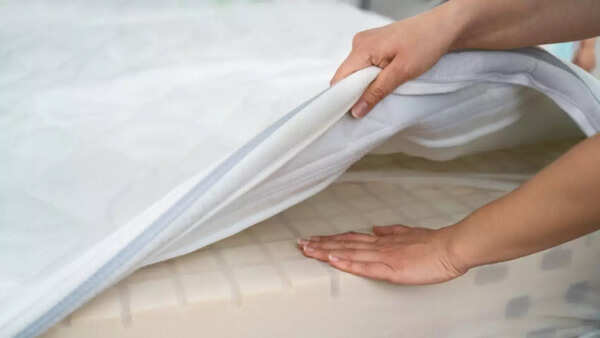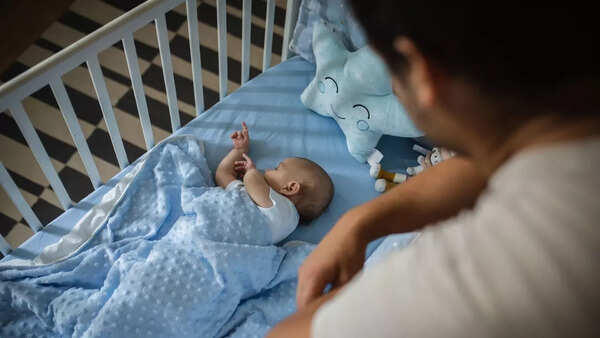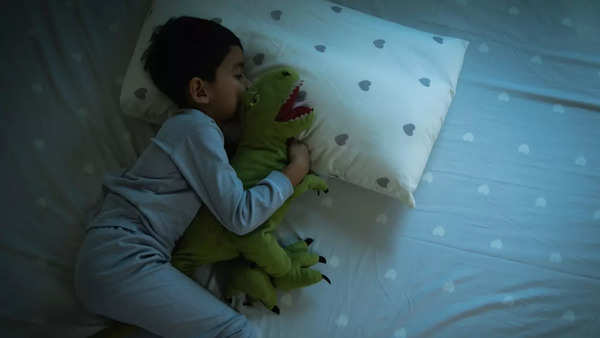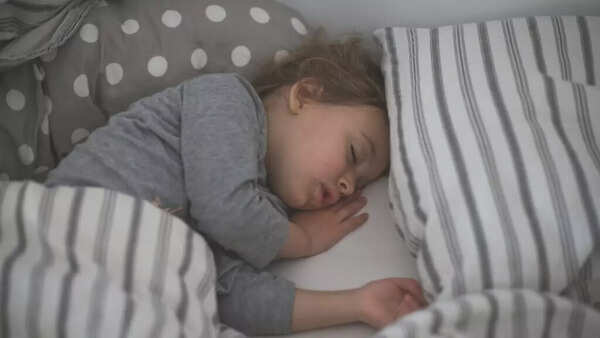Table of Contents
Nap time is possibly one of the most peaceful times in anyone’s daily life. But do you know how your kids might be exposed to severe harm while they’re sleeping?
Accodign to a new study, babies’ and children’s mattresses and bedding emit toxic chemicals and flame retardants associated with developmental and hormonal disorders.

Read on to know more.
What does the study say?
Senior study author Miriam Diamond, a professor in the Earth Sciences Department at the University of Toronto, said, “We measured chemicals in the air of 25 children’s bedrooms between the ages of 6 months and 4 years and found worrisome levels of more than two dozen phthalates, flame retardants and UV filters.”
The highest levels of the chemicals were found near the children’s beds, according to the study published Tuesday in the journal Environmental Science & Technology.
Poll
Do you think current safety standards adequately protect children from harmful mattress chemicals?
To check why, a companion study by Diamond’s team tested 16 new children’s mattresses and found those to be a key source of the exposure. Then, using a simulation, the team found that the warmth and weight of the sleeping child could increase the off-gassing of the toxicants.
Jane Houlihan, research director for Healthy Babies, Bright Futures, an alliance of nonprofits, scientists and donors dedicated to reducing babies’ exposures to neurotoxic chemicals revealed, “They found that even something as simple as a child’s body heat and weight on a mattress can increase the release of toxic chemicals into the air they breathe while sleeping – a factor that current safety standards don’t consider.”

She was not involved in the new research.
Although the study did not include brand names, the researchers told CNN that they were well-known, lower-cost mattresses found at leading retail stores. Tested mattresses were purchased in Canada, but they contained materials from the United States and Mexico. Therefore, the results are likely to apply to mattresses purchased throughout North America, Diamond said.
Houlihan informed CNN via an email, “The results show that parents can’t shop their way out of the problem. The mattresses tested emitted toxic chemicals regardless of their price, materials, or country of origin. And some contained additives above legal limits.”
The American Chemistry Council, which represents the US chemical, plastic and chlorine industry, told CNN via email that its members take safety seriously.
Tom Flanagin, the group’s senior director of product communications, said, “The use of flame retardant chemistries can be critical in situations where an accidental spark or short-circuited wire turns into a flame.” He added, “While we will need time to review the study in detail, the mere presence of a chemistry is not an indication of risk or adverse effect. Today, any chemistry introduced or imported into the U.S. must undergo rigorous review and approval processes by federal agencies, such as EPA and FDA.”
Chemicals in mattresses:
Mattresses Can Be a Major Source of Harmful Chemicals in Kids’ Rooms. Studies have tested for phthalates, flame retardants, and more.

What are these chemicals?
Phthalates: Phthalates are a group of chemicals used to make plastics more flexible and durable. They are also used as solvents and stabilizers in many consumer products. These are found in hundreds of consumer products, such as food storage containers, shampoo, makeup, perfume, and children’s toys, and are known to interfere with the body’s mechanism for hormone production, known as the endocrine system.
Moreover, according to the National Institute of Environmental Health Sciences, they are linked with early puberty, reproductive issues and genital defects, hormone issues, and other problems.
Diamond quoted, “Our study we found high levels of phthalates that are restricted in toys but not in mattresses.”
However, as the National Institute of Environmental Health Sciences states on its website, even small hormonal disruptions can cause “significant developmental and biological effects.”
Children are especially vulnerable to the disruptive impact of chemicals due to their rapidly developing brains and bodies. Exposure to phthalates has been linked to increased risks of allergic diseases, behavioral problems, and potentially even developmental delays or disorders like autism.
As per research, phthalates can trigger reproductive problems, such as genital malformations and undescended testes in baby boys and lower sperm counts and testosterone levels in adult males. Studies have also linked phthalates to childhood obesity, asthma, cardiovascular issues, premature deaths, and cancer.
Banned flame retardants:Polybrominated diphenyl ethers (PBDEs) are flame retardants linked to significant intellectual disability in children, resulting in a loss of 162 million IQ points and over 738,000 cases from 2001 to 2016, according to a January 2020 study. While some PBDEs were banned by the EPA in 2012, replacements like organophosphate esters (OPFRs) have emerged, associated with reproductive and developmental issues in toddlers.
Research indicates that OPFRs are used widely and may pose health risks, particularly to children. In one study, mattresses contained high levels of harmful chemicals, including TDCPP, a carcinogen, and PCTP, a banned flame retardant in both Canada and for children’s sleepwear in the US.
In some states, such as California, with its passage of Prop 65, regulators have put additional limitations in place on products marketed for children, but no national law covering classes of flame retardants exists, despite a 2017 report by the US Consumer Products Safety Commission on the dangers of organophosphate esters.
Study co-author Arlene Blum, executive director of the Green Science Policy Institute, a group of scientists and policy experts who work and report on chemicals of concern, said via a statement, “It’s concerning that these chemicals are still being found in children’s mattresses even though we know they have no proven fire-safety benefit and aren’t needed to comply with flammability standards,” adding, “Parents should be able to lay their children down for sleep knowing they are safe and snug.”
What is the healthier alternative?
Potentially toxic chemicals are so widespread in children’s products that it can be very hard for parents to choose safer options. However, in the case of mattresses, switching to good old cotton mattresses is a healthier option.

Cotton mattresses can be a healthier alternative to chemical mattresses, particularly those made with polyurethane foam. Cotton is a natural fiber, making it a good choice for those seeking a more environmentally friendly and breathable option. However, cotton mattresses have some drawbacks, like their tendency to compress and lose shape over time, which can negatively impact spinal alignment and support.
Advantages of cotton mattresses:
Natural and hypoallergenic: Cotton is a natural fiber, making it a hypoallergenic option that is less likely to cause allergies or skin irritations.
Breathable: Cotton allows air circulation, which can help regulate body temperature and promote a more restful sleep, especially in hot climates.
Eco-friendly: Cotton is a renewable resource, making it a more environmentally friendly choice compared to some synthetic materials.
Affordable: Cotton mattresses are generally more affordable than some other types, such as memory foam.


